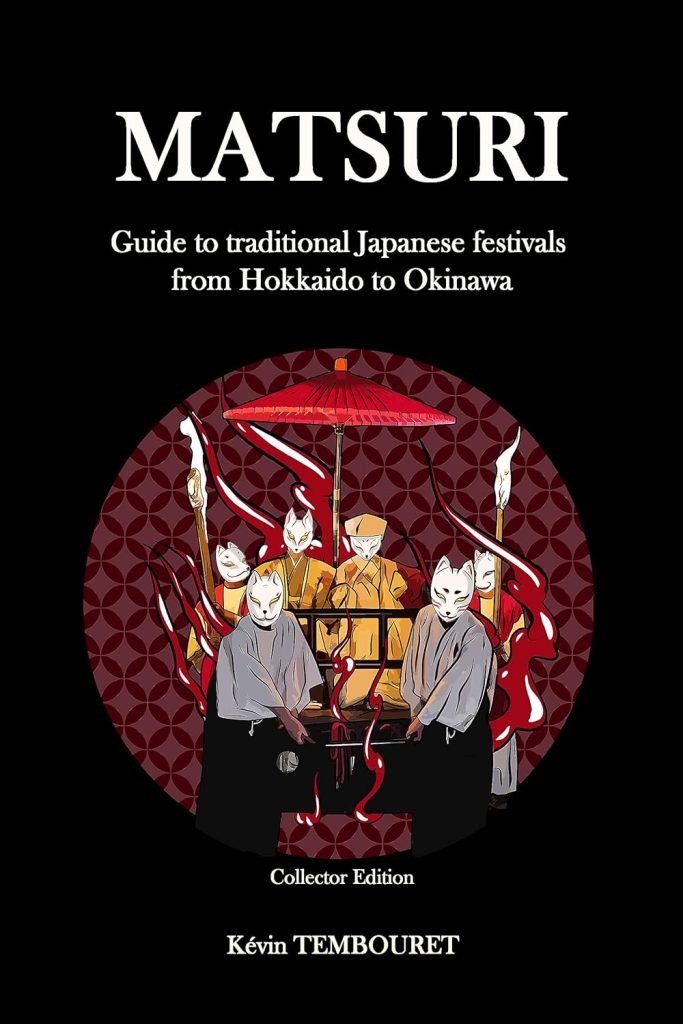10 Reasons Why Japan is one of the World’s Top 10 Most Visited Countries
According to World Travel Market’s Global Travel Report in 2023, Japan was ranked in the top 10 countries that tourists chose to visit that year. The country has seen a massive bounce-back in tourism since the global pandemic. Let’s take a look at some of the reasons why people love visiting Japan.
A long and rich history
Japan’s history is a rich tapestry that weaves together periods of isolation with eras of external influence, creating a culture that is both uniquely Japanese and globally engaged. To understand Japan’s development, one must delve into several key historical periods.
The Jomon Period marks the beginning of Japan’s known history, where the early inhabitants were hunters, gatherers, and fishers. The Yayoi Period saw the introduction of rice farming, leading to more complex social structures and the unification of hundreds of small countries.
The Kofun Period is characterized by the construction of large tomb mounds for leaders, signifying a more united Japan. The Asuka Period introduced Buddhism, which has had a lasting impact on Japanese culture, and the Nara Period established the first permanent capital.
The Heian Period is known for the rise of the samurai class and the start of feudal Japan, while the Kamakura Period saw the establishment of the shogunate, a military dictatorship that would rule Japan for centuries.
The Muromachi Period brought about cultural developments such as the tea ceremony and ink painting, and the Azuchi-Momoyama Period was marked by the unification of Japan under Oda Nobunaga and Toyotomi Hideyoshi.
The Edo Period was a time of peace and isolation from the world, leading to a flourishing of culture, including kabuki theater, ukiyo-e art, and haiku poetry. The Meiji Restoration ended the shogunate, restored imperial rule, and began a period of rapid modernization and Westernization.
The Taisho Period saw further democratization and modernization, but the Showa Period was marked by war and devastation, followed by remarkable economic growth and recovery in the post-war era.
The Heisei Period brought about the “Lost Decade,” a time of economic stagnation, but also saw Japan emerge as a leader in technology and pop culture. Each of these periods contributed to the Japan we know today—a nation with a deep respect for its traditions and a forward-looking approach to innovation and global engagement.
Maintaining cultural tradition
Traditional Japanese cultural experiences such as tea ceremonies and geisha performances are integral to Japan’s national identity, encapsulating the essence of Japanese aesthetics, values, and social customs.
The Japanese tea ceremony, known as “chanoyu” or “sado,” is a choreographed ritual of preparing and serving Japanese green tea, called matcha, accompanied by traditional sweets to balance its bitter taste. More than just a drink, the tea ceremony embodies the principles of harmony, respect, purity, and tranquility—central tenets of Japanese culture. It reflects the Zen Buddhist philosophy and the concept of “ichigo ichie” (one time, one meeting), which emphasizes the importance of cherishing any gathering that can never be replicated. Through its meticulous practice, participants can gain insights into Japanese history, art, and spirituality.
Geisha, often misunderstood by outsiders, are custodians of Japan’s traditional arts. They are highly skilled entertainers who perform various Japanese arts such as classical music, dance, and games. The geisha tradition highlights the Japanese value of “hansei” (self-reflection) and the pursuit of perfection in one’s craft. Geisha performances and the “okiya” (geisha houses) where they train, serve as living museums, preserving ancient songs, literature, and customs that might otherwise fade away.
Both tea ceremonies and geisha performances are not mere relics of the past; they are active, living practices that continue to shape Japan’s identity. They offer a window into the Japanese soul, providing a sense of continuity with the past and a touchstone for national pride.
Popular cuisine
Japanese cuisine, known for its emphasis on seasonality, quality of ingredients, and presentation, has captivated food enthusiasts around the world. Among the most popular Japanese foods that tourists seek are sushi, ramen, tempura, and onigiri.
Sushi, with its origins as a street food in Edo (present-day Tokyo), is a testament to the Japanese culinary philosophy of simplicity and respect for ingredients. The combination of vinegared rice with fresh seafood, often enjoyed at the counter where diners can witness the skillful preparation, offers a taste of Japan’s connection to the ocean and its seasonal bounties.
Ramen, a noodle soup dish, has evolved into a cultural icon with regional variations that showcase local flavors and ingredients. Its rich broth, chewy noodles, and endless topping combinations make it a comforting and customizable experience that resonates with the diversity of Japanese cuisine.
Tempura, consisting of lightly battered and deep-fried seafood and vegetables, is beloved for its delicate crunch and the skill required to master the perfect batter consistency and frying technique. It represents the Japanese art of transformation, where simple ingredients are elevated into a refined dish.
Onigiri, rice balls with various fillings, are a staple of Japanese comfort food. They embody the Japanese concept of “umami” and convenience, making them a favorite among tourists seeking an authentic and quick taste of Japanese daily life.
These foods are popular among tourists not only for their flavors but also for their cultural significance and the stories they tell about Japan’s history, geography, and traditions.
Iconic landmarks and natural wonders
Japan’s landscape is punctuated by iconic landmarks and natural wonders that define the country’s physical and cultural geography. From the snow-capped peak of Mount Fuji to the ancient temples of Kyoto, these sites are emblematic of Japan’s natural beauty and its long history.
Mount Fuji, an active stratovolcano and the highest peak in Japan, is a sacred symbol of the nation and a source of artistic inspiration. Its near-perfect conical shape has made it a favorite subject in literature and art, particularly ukiyo-e woodblock prints.
The Itsukushima Shrine with its floating torii gate, the Himeji Castle known as the White Heron Castle, and the historic village of Shirakawa-go with its traditional gassho-zukuri farmhouses, are all UNESCO World Heritage Sites that offer a glimpse into Japan’s feudal past and its architectural ingenuity.
The Arashiyama Bamboo Grove in Kyoto provides a sensory experience unlike any other, with towering bamboo stalks that seem to continue endlessly into the sky. The Hiroshima Peace Park and the Atomic Bomb Dome stand as poignant reminders of the past and symbols of peace and resilience.
These landmarks are not just tourist destinations; they are deeply ingrained in the Japanese psyche and are a testament to the country’s ability to harmonize its rich history with its natural environment.
Innovative technology
Japan’s contributions to technology and innovation have had a profound impact on the world, shaping industries and improving the lives of millions. From the revolution of the automotive industry by companies like Toyota and Honda to the pioneering work in consumer electronics by Sony and Panasonic, Japan has been at the forefront of technological advancement.
The country’s post-war economic miracle is largely attributed to its focus on high-quality manufacturing and continuous improvement, encapsulated in the concept of “kaizen.” Japan’s bullet trains, or Shinkansen, are a marvel of engineering and have become a symbol of efficiency and punctuality.
In the realm of consumer technology, Japan has been a leader in the video game industry, with Nintendo and Sony creating some of the most iconic gaming consoles and franchises. The country’s robotics industry is also highly advanced, producing robots for a variety of uses, from industrial manufacturing to companionship and healthcare.
Japanese innovation extends to environmental technology as well, with advancements in energy-efficient appliances and the development of eco-friendly materials. The country’s commitment to research and development continues to drive global progress in multiple fields, making Japan a powerhouse of modern technology and innovation.
Festivals and seasonal events
Festivals and seasonal events are central to Japanese culture, reflecting the country’s agrarian roots and the Shinto belief in the sacredness of nature. These events, known as “matsuri,” are held throughout the year to honor deities, celebrate the seasons, and bring communities together.
Spring is marked by the famous cherry blossom festivals, where people engage in “hanami,” picnicking under the blooming sakura trees. Summer brings vibrant celebrations like the Gion Matsuri in Kyoto, featuring elaborate floats and traditional costumes.
Autumn is celebrated with harvest festivals, and the changing leaves are admired much like the cherry blossoms. Winter’s festivities include the Sapporo Snow Festival, showcasing massive ice sculptures.
These events are not just for entertainment; they are a living tradition that fosters a sense of belonging and continuity with the past. They showcase the Japanese values of harmony, respect, and gratitude towards nature and the gods.
Fashion and design
Japanese fashion and design have made a significant mark on the global stage, known for their innovative approach, attention to detail, and blending of tradition with modernity. Designers like Issey Miyake, Rei Kawakubo, and Yohji Yamamoto have redefined fashion with their avant-garde styles, influencing the industry with their unique vision.
Japanese street fashion, particularly from the Harajuku district in Tokyo, has become a cultural phenomenon, celebrated for its eclectic and expressive styles. The “kawaii” culture, emphasizing cuteness, has also gained international appeal, influencing everything from fashion to pop culture.
In design, Japan is renowned for its minimalist aesthetic, as seen in the clean lines and functional beauty of its architecture and products. The Japanese philosophy of “wabi-sabi,” finding beauty in imperfection and transience, is reflected in design elements that embrace simplicity and natural materials.
Japanese fashion and design continue to inspire and challenge the global community, offering a distinct perspective that values both innovation and tradition.
Entertainment, including anime and manga
Japanese entertainment, particularly anime and manga, has captivated audiences worldwide with its unique storytelling, art styles, and themes. Anime, or Japanese animation, offers a wide range of genres that appeal to all ages, from action-packed adventures to poignant dramas.
Manga, Japanese comic books or graphic novels, are equally diverse and are often the source material for anime. The depth of character development and intricate plots found in manga have garnered a dedicated following, and the medium is respected as an art form in its own right.
The global success of anime and manga can be attributed to their ability to blend fantastical elements with real-life issues, creating stories that resonate with audiences regardless of cultural background. The industry has also spawned subcultures such as cosplay, where fans dress up as their favorite characters, further demonstrating the impact of Japanese entertainment on global pop culture.
The uniqueness of Japanese language
The Japanese language is deeply intertwined with the country’s culture and history. Its writing system, which includes kanji (characters borrowed from Chinese), hiragana, and katakana, reflects the blending of indigenous and foreign influences.
Japanese is rich in honorifics, reflecting the society’s emphasis on hierarchy and respect. The language also has a multitude of words to express nuances of emotion and nature, showcasing the Japanese appreciation for subtlety and the natural world.
The preservation of dialects and the use of classical Japanese in arts and literature demonstrate a reverence for the past, while the incorporation of foreign loanwords speaks to Japan’s engagement with the global community.
Traditional sports and martial arts of Japan, and how are they practiced today?
Traditional sports and martial arts are an important part of Japan’s cultural heritage. Sumo, Japan’s national sport, is a form of wrestling with roots in Shinto ritual. Today, it is a professional sport with grand tournaments that draw crowds and television audiences.
Martial arts such as judo, kendo, and karate have also originated in Japan. These disciplines are not only forms of self-defense but also ways to cultivate discipline, character, and respect. They are practiced worldwide, both as sports and as means of personal development.
These traditional practices continue to be an integral part of Japanese culture, preserving ancient techniques and philosophies while adapting to contemporary life.









Your point of view caught my eye and was very interesting. Thanks. I have a question for you.
Thanks for sharing. I read many of your blog posts, cool, your blog is very good.
Your article helped me a lot, is there any more related content? Thanks!
Thank you for your sharing. I am worried that I lack creative ideas. It is your article that makes me full of hope. Thank you. But, I have a question, can you help me?
Can you be more specific about the content of your article? After reading it, I still have some doubts. Hope you can help me. https://www.binance.com/join?ref=P9L9FQKY
Thank you for your sharing. I am worried that I lack creative ideas. It is your article that makes me full of hope. Thank you. But, I have a question, can you help me?
Your point of view caught my eye and was very interesting. Thanks. I have a question for you. https://www.binance.com/es-MX/register?ref=JHQQKNKN
Your point of view caught my eye and was very interesting. Thanks. I have a question for you.
Thank you for your sharing. I am worried that I lack creative ideas. It is your article that makes me full of hope. Thank you. But, I have a question, can you help me?
Your article helped me a lot, is there any more related content? Thanks!
Thank you for your sharing. I am worried that I lack creative ideas. It is your article that makes me full of hope. Thank you. But, I have a question, can you help me?
Your article helped me a lot, is there any more related content? Thanks!
Can you be more specific about the content of your article? After reading it, I still have some doubts. Hope you can help me.
Thank you for your sharing. I am worried that I lack creative ideas. It is your article that makes me full of hope. Thank you. But, I have a question, can you help me?
Thanks for sharing. I read many of your blog posts, cool, your blog is very good.
Thank you for your sharing. I am worried that I lack creative ideas. It is your article that makes me full of hope. Thank you. But, I have a question, can you help me? https://www.binance.com/pt-BR/join?ref=YY80CKRN
Your article helped me a lot, is there any more related content? Thanks!
Your point of view caught my eye and was very interesting. Thanks. I have a question for you.
Thanks for sharing. I read many of your blog posts, cool, your blog is very good.
Thank you for your sharing. I am worried that I lack creative ideas. It is your article that makes me full of hope. Thank you. But, I have a question, can you help me?
Your point of view caught my eye and was very interesting. Thanks. I have a question for you.
Thank you for your sharing. I am worried that I lack creative ideas. It is your article that makes me full of hope. Thank you. But, I have a question, can you help me?
Your article helped me a lot, is there any more related content? Thanks!
Your article helped me a lot, is there any more related content? Thanks!
Thank you for your sharing. I am worried that I lack creative ideas. It is your article that makes me full of hope. Thank you. But, I have a question, can you help me?
Thanks for sharing. I read many of your blog posts, cool, your blog is very good.
Your article helped me a lot, is there any more related content? Thanks!
Thanks for sharing. I read many of your blog posts, cool, your blog is very good. https://www.binance.com/uk-UA/register?ref=W0BCQMF1
Can you be more specific about the content of your article? After reading it, I still have some doubts. Hope you can help me.